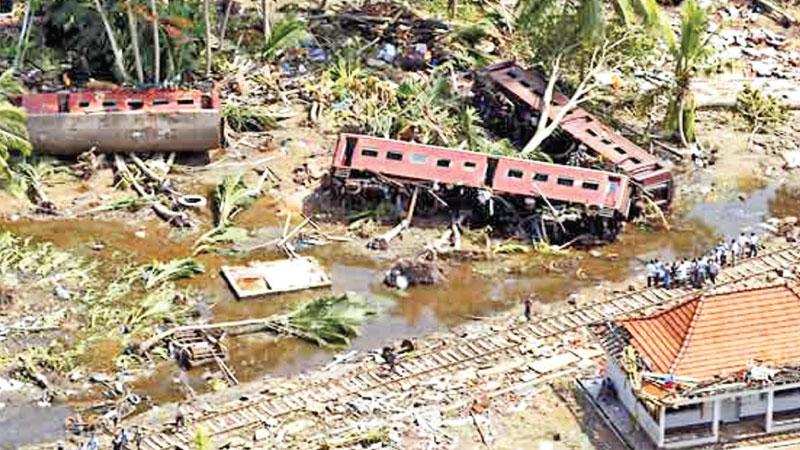
Where were you on December 26, 2004? That is something you are never likely to forget. As huge sea waves lashed the coast and rushed inland, leaving a trail of death and destruction in 14 Indian Ocean and African countries including Sri Lanka, it became the biggest news event of the century.
Fifteen years have gone by, yet we remember it as if it happened yesterday. The memories are still raw. The tsunami arose from a displacement between the India and Burma plates, 45 miles off the west coast of northern Sumatra. The earthquake’s initial magnitude was estimated at 8.0 on the Richter scale. Almost 40 hours after the quake, they learned that its true force stayed hidden as it travelled along 745 miles of fault line. Seismologists upgraded the magnitude to 9.0, but the final reading, published in May 2005, indicated that the Indian Ocean quake had one of the highest magnitudes ever recorded: 9.1.
When the water receded and the toll was assessed, 230,000 people (including 40,000 in Sri Lanka) were dead and 1.7 million others had lost their homes. But why this massive scale of destruction? At the time, hundreds of seismic stations were located around the world, but there were just six sensors designed to track sudden changes in sea level—an indication that a tsunami wave could be forming.
This system, called Deep-Ocean Assessment and Reporting of Tsunamis (DART), relies on an instrument placed on the seafloor that calculates any irregular change in wave height and communicates with a surface buoy. The buoy, in turn, relays the information to a satellite, which sends the data to a regional tsunami warning centre. But in 2004, all six of those DART sensors were in the Pacific Ocean - none was in the Indian Ocean.
When the US Geological Survey picked up the Earthquake and warned the Indian Ocean countries that a tsunami is a real possibility, it was completely ignored in many instances. No warnings were issued to coastal residents, who had no indication that their lives would be in danger. Any warning systems in the region were inadequate to alert everyone in the tsunami’s path.
The world quickly learned valuable lessons from the Boxing Day tsunami. Countries joined hands to fund tsunami warning sensors and warning towers. There are more than 60 DART sensors and buoys in the world’s oceans now. The 2011 tsunami devastated Japan and nearly 16,000 people died, but an astounding number survived, considering the size of the event. The tsunami alarm in Kesennuma Bay, along Japan’s Sanriku Coast, blared two minutes after the earthquake, allowing many people to evacuate to rooftops before the water arrived.
Tsunami warning technology is constantly evolving. The University of South Florida (USF) geoscientists have tested a new shallow water buoy that can detect the small movements and changes in the Earth’s seafloor that are often a precursor to deadly natural hazards, like earthquakes, volcanoes and tsunamis.
The buoy, created with the assistance of an $822,000 grant from the National Science Foundation’s Ocean Technology and Interdisciplinary Coordination program, was installed off Egmont Key in the Gulf of Mexico last year and has been producing data on the three-dimensional motion of the seafloor.
The patent-pending seafloor geodesy system is an anchored spar buoy topped by high precision GPS. The buoy’ orientation is measured using a digital compass that provides heading, pitch, and roll information – helping to capture the crucial side-to-side motion of the Earth that can be diagnostic of major tsunami-producing earthquakes. Any advances that can accurately predict the formation of a tsunami is welcome, bearing in mind that the death toll from tsunamis, at more than 260,000 during the past century, is higher than that from any other natural hazard.
The idea is to give at least a half-hour head start to the residents to get to higher ground. It is also vital to literally drill the tsunami into young minds – in Chile, for example, even kindergarten kids have to undergo regular tsunami evacuation practice sessions.
We still do not have the technology to prevent the occurrence of earthquakes and tsunamis, leave alone predict when one would happen. But during the intervening 15 years, the world has learned a lot about tsunamis, so there is hope for such advances in the future.
